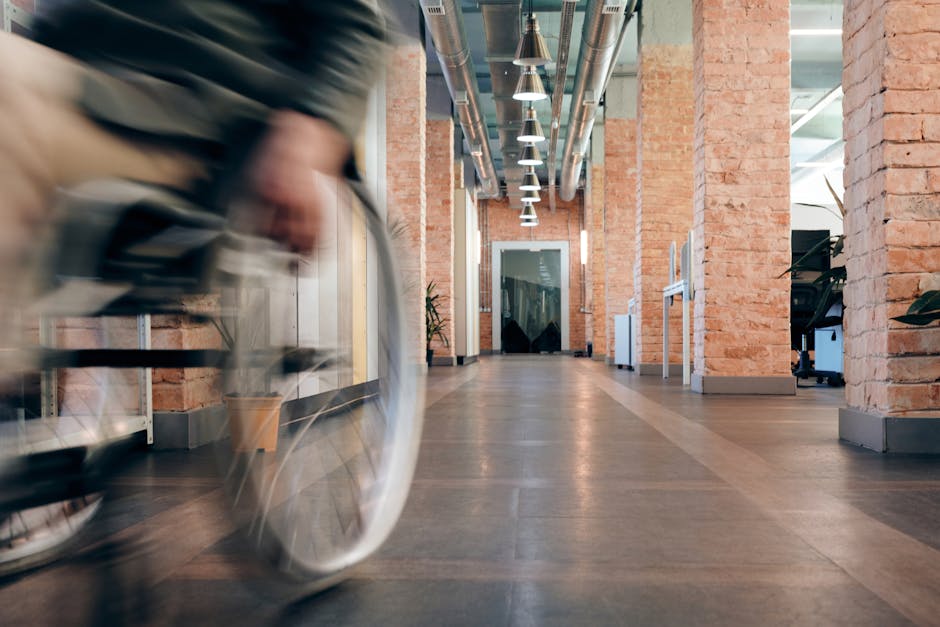Inclusive Design Methodologies: Creating for All
Welcome to the world of inclusive design methodologies, where innovation meets accessibility to create products, services, and environments that cater to the diverse needs of all individuals. In a society that is becoming increasingly aware of the importance of inclusivity, it is crucial to understand the principles and practices behind inclusive design methodologies. From technology to architecture, from education to healthcare, inclusive design methodologies have the power to transform the way we interact with the world around us.
The Evolution of Inclusive Design

Before delving into the intricacies of inclusive design methodologies, it is essential to understand the evolution of this concept. The roots of inclusive design can be traced back to the 1960s, with the emergence of universal design principles that aimed to create products and environments accessible to everyone, regardless of age, ability, or status. Over the years, inclusive design has evolved into a more comprehensive approach that not only focuses on accessibility but also on diversity and inclusivity in all forms.
Today, inclusive design methodologies encompass a wide range of disciplines, including but not limited to product design, web design, architecture, and urban planning. The goal of inclusive design is to ensure that everyone, regardless of their abilities or limitations, can fully participate in and benefit from the built environment and the digital world.
The Principles of Inclusive Design

At the core of inclusive design methodologies are a set of principles that guide the creation of products, services, and environments that are inclusive and accessible to all. These principles include:
Equitable Use
Equitable use emphasizes that designs should be usable by people with diverse abilities. This principle calls for products and environments that are accessible to everyone, regardless of their physical, cognitive, or sensory abilities. For example, designing a website with alternative text for images ensures that visually impaired users can access the content.
Flexibility in Use
Flexibility in use advocates for designs that accommodate a wide range of individual preferences and abilities. This principle encourages designers to provide multiple ways for users to interact with a product or environment. For instance, a smartphone with customizable text size and contrast settings caters to users with varying visual abilities.
Simple and Intuitive Use
Simple and intuitive use stresses the importance of designing products and environments that are easy to understand and use. This principle aims to reduce complexity and eliminate unnecessary barriers to access. For example, using clear and concise language in instructional materials makes them more accessible to a broader audience.
Perceptible Information
Perceptible information emphasizes the need to present information in a way that is easily perceivable by all users. This principle calls for designs that communicate information effectively through multiple sensory modalities. For instance, using both visual and auditory cues in a navigation system benefits users with different sensory preferences.
Tolerance for Error
Tolerance for error recognizes that users will make mistakes and seeks to minimize the negative consequences of those errors. This principle encourages designers to create forgiving designs that prevent errors or allow users to easily correct them. For example, providing clear error messages and prompts helps users navigate a website more effectively.
Low Physical Effort
Low physical effort advocates for designs that require minimal physical exertion to use. This principle aims to reduce fatigue and strain on the user’s body, particularly for individuals with mobility impairments. For example, designing door handles that are easy to grip and open benefits users with limited hand dexterity.
Applications of Inclusive Design Methodologies

The principles of inclusive design can be applied across a wide range of disciplines and industries to create products, services, and environments that are accessible and inclusive. Let’s explore some of the key applications of inclusive design methodologies:
Technology
In the realm of technology, inclusive design methodologies are revolutionizing the way products and services are developed. From smartphones with built-in accessibility features to websites with responsive design, technology is becoming more inclusive and accessible to users of all abilities. For example, voice recognition software benefits users with mobility impairments, while screen readers make digital content accessible to visually impaired users.
Architecture
In architecture, inclusive design methodologies are shaping the way buildings and public spaces are designed and constructed. From wheelchair ramps to automatic doors, architects are incorporating universal design principles to ensure that buildings are accessible to everyone. For example, designing public parks with sensory gardens benefits individuals with autism spectrum disorders, while incorporating tactile signage benefits users with visual impairments.
Education
In the field of education, inclusive design methodologies are transforming the way students learn and interact with educational materials. From inclusive classrooms to accessible learning resources, educators are embracing universal design principles to create a more inclusive learning environment. For example, providing closed captioning on educational videos benefits students with hearing impairments, while using inclusive language in textbooks benefits students with cognitive disabilities.
Healthcare
In healthcare, inclusive design methodologies are enhancing the patient experience and improving the quality of care. From accessible medical devices to patient-centered facilities, healthcare providers are integrating universal design principles to ensure that patients of all abilities receive the care they need. For example, designing hospital rooms with adjustable beds benefits patients with mobility impairments, while providing sign language interpreters benefits patients with hearing impairments.
Transportation
In the realm of transportation, inclusive design methodologies are redefining the way people move from one place to another. From accessible public transportation to inclusive urban planning, transportation systems are becoming more inclusive and accessible to all individuals. For example, designing buses with wheelchair ramps benefits passengers with mobility impairments, while creating audio announcements benefits passengers with visual impairments.
Product Design
In the field of product design, inclusive design methodologies are driving innovation and creativity in the development of consumer products. From ergonomic kitchen utensils to braille-enabled appliances, designers are incorporating universal design principles to create products that are accessible and inclusive. For example, designing clothing with adaptive features benefits individuals with physical disabilities, while creating easy-grip utensils benefits individuals with limited hand dexterity.
Expert Opinions

According to renowned designer and accessibility advocate, Kat Holmes, “Inclusive design is not just about making things accessible. It’s about creating products and environments that reflect the diversity of human experience and embrace the full range of human abilities.”
Similarly, Tim Brown, CEO of design and innovation firm IDEO, highlights the importance of inclusive design by stating, “Designing for the edges of society benefits everyone. When we design for people with disabilities, we create products and services that are more user-friendly, intuitive, and innovative for all users.”
Common Misconceptions
One common misconception about inclusive design is that it is only relevant to individuals with disabilities. In reality, inclusive design benefits everyone, regardless of their abilities or limitations. By creating products, services, and environments that are inclusive and accessible, designers can enhance the user experience for all individuals.
Another misconception is that inclusive design is costly and time-consuming. While it is true that implementing inclusive design methodologies may require additional resources upfront, the long-term benefits far outweigh the initial investment. Inclusive design not only expands the potential market for products and services but also fosters innovation and creativity in the design process.
Conclusion
To wrap things up, inclusive design methodologies are transforming the way we think about accessibility and inclusivity in the built environment and the digital world. By embracing the principles of inclusive design, designers can create products, services, and environments that cater to the diverse needs of all individuals, regardless of their abilities or limitations. Inclusive design is not just a design philosophy; it is a movement towards a more inclusive and equitable society where everyone has the opportunity to fully participate and thrive.
As we look to the future, it is essential to consider the broader implications of inclusive design methodologies on society as a whole. By promoting diversity, equity, and inclusion in all aspects of design, we can create a more accessible and inclusive world for future generations. Let’s continue to champion inclusive design and work towards a more inclusive and accessible future for all.




